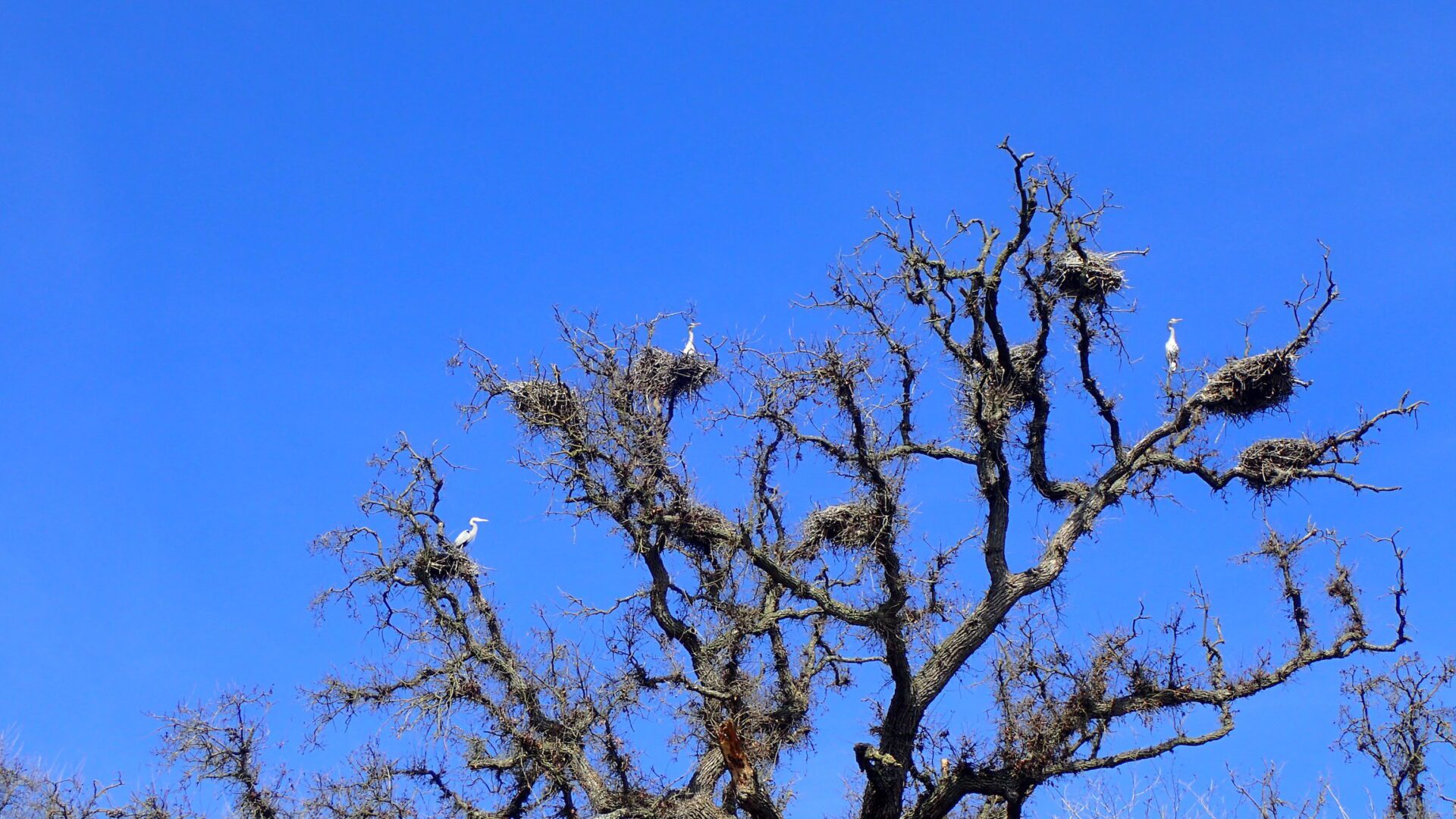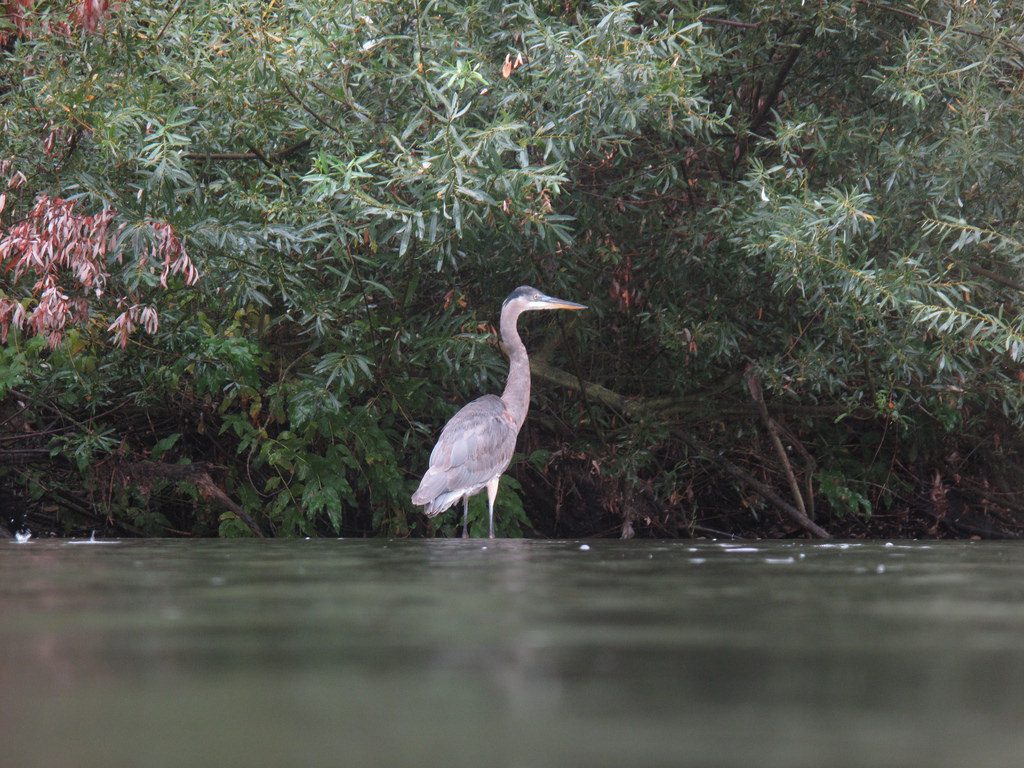Wednesday April 11, 2018

While quietly kayaking down a calm stretch of river, you may be unaware that you are in the presence of a heron, until suddenly from downstream you hear a prehistoric-sounding screech. Great blue herons (Ardea herodias) usually notice intruders in their territories before you even see them. They rarely allow humans to come close without taking flight as they loudly express their displeasure at being disrupted during hunting, and sometimes they aggressively defend their favorite spot. You might only catch a glimpse of a heron from afar, or as it lifts off gracefully into the air in a somewhat surprising manner, as herons’ lanky legs and massive wing-span would seem cumbersome on any other animal.

There are seven species of herons in the United States and three species of egrets. All have a similar-looking long and thin, S-shaped neck, a long beak, and tall flamingo-like legs. Great blue herons are the largest of these species, and while they are usually bluish-gray in color with a brown neck and black head tuft, in some places they have white or intermediate-colored plumage. They live in the western United States year-round, but those found in the eastern U.S. usually migrate from Central America to as far north as Canada during breeding season in the springtime. Look for great blue herons perched or wading along rivers, marshes, wetlands, and coasts, or in nearby fields and farmlands.

While working at one of our projects sites on the Tuolumne River in Oakdale, our staff at FISHBIO routinely encounter what we presume to be the same heron defending his fishing territory at the same general location day after day and year after year. While we have yet to win his or her trust enough to get close and snap a good photo, we were able to recently take the top photo of a heron rookery in a cottonwood tree on the Tuolumne River, as well as some of the other local herons that are a little less territorial. Despite their antisocial hunting habits, herons congregate in colonies that may number more than one hundred other herons, egrets, and ibises. These normally solitary birds group together to find mates during the breeding season. Herons capture a mate’s attention by performing courtship dances and then build a nest where they raise their young together for the season. We were surprised to discover many other amazing facts about herons too, like that their S-shaped necks help them quickly lunge to strike prey, such as fish and rodents. We knew herons’ necks were pretty and majestic, but it turns out it’s for practical reasons!
